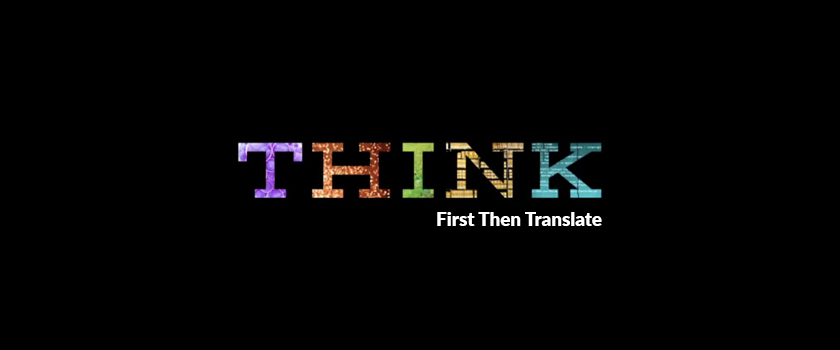I still remember when I was in college, every time my family tuned the television to an international channel, they would ask me to translate. “You are in English major, translate what they are talking!” Oh, dear! You are asking a college student to do the highest state translation – Simultaneous Interpretation.
Translation, its contents is far more than literal meaning. Some people say, “Translation is so easy. If you know two different languages, you can translate.” But that is far from the case. Anyone who has done translation job may know, translation is not that easy as most people think.
Yes, translation of ordinary things or daily conversation is not difficult, requiring only basic knowledge of two languages. But professional translation, LOCOLIZATION, is far more than what laymen think. To be specialized in localization, firstly, you mast have excellent knowledge of at least two languages, including morphology, grammar, syntax as well as cultural background.
Secondly, if you want to be specialized in some certain field, you should have professional knowledge in that field, such as law, electronics, communication, medicine, etc. Thirdly, professional dedication is also very important. This point is valid in every industry; whatever you do, you need to be concentrated.
Translation is the cooperation of eyes, brain, and hands. First, the source languages come in to your eyes. You read it and think with your brain: what is the literal meaning? Is there any implication? How should I translate it into target language? Literal translation or free translation? How should it be expressed?
After thinking, you write its translation down or type it out. From here you can see, think is quite important, deciding whether your translation is understand correctly and expressed in the right way. That is why I say “Think first, Then translate”.
Now I will show you some examples.
Source: Advanced Materials magazine
Issue 2, August 2012
Original translation: 先进材料杂志
2012 年 8 月 2 日发行
This translator regards “Issue 2, August 2012” as “issued on 2nd August, 2012”. But if you think carefully, you may found this understanding is nor correct. Actually, it means “the second issue, August 2012”. Thus, we can change the translation as follows: 2012 年 8 月,第 2 期.
Source: Photographers: Peter Fuchs, Buchs; Sara Jensen, The Woodlands.
Original translation: 摄影师:Peter Fuchs、Buchs、Sara Jensen 和 The Woodlands。
For this sentence, the translator confused common with colon. Also, if you search Buchs and The Woodlands, you may find these two words are not people names, but place names. Actually, it mean Peter Fuchs comes from Buchs, and Sara Jensen comes from the Woodland. Thus, the translation should be:摄影师:Peter Fuchs,布克斯;Sara Jensen,伍德兰兹。
Some other examples:
Source: During the Jubilee, the Royal Family travelled from Westminster Hall to Buckingham Palace by carriage; the same carriage that transported the Queen to her coronation in June 1953
Original translation: 在庆典期间,王室成员将乘坐马车从威斯敏斯特宫到达白金汉宫;同一辆马车将把女王送至她于 1953 年 6 月加冕的地方。
Corrected translation: 庆典期间,王室成员将乘坐 1953 年 6 月将女王送至加冕之处的同一辆马车,从威斯敏斯特宫到达白金汉宫。
Source: One famous resident close to Huntsman’s LA site in Glendale, is American comedian and TV host, Jay Leno
Original translation: Jay Leno 是美国喜剧演员和电视节目主持人,居住在亨斯迈洛杉矶基地附近的格兰岱尔 (Glendale)。
Corrected translation: Jay Leno 是美国喜剧演员和电视节目主持人,居住在格兰岱尔市的亨斯迈洛杉矶基地附近。
It is obvious to see, the reason for incorrect translation is misunderstanding of the source languages. In fact, these sentences are not that difficult to understand. If the translator think more and take a little more time analyze the structure of source sentences, he/she can give a better translation. Thus, translators must remember: Think first, Then translate!



